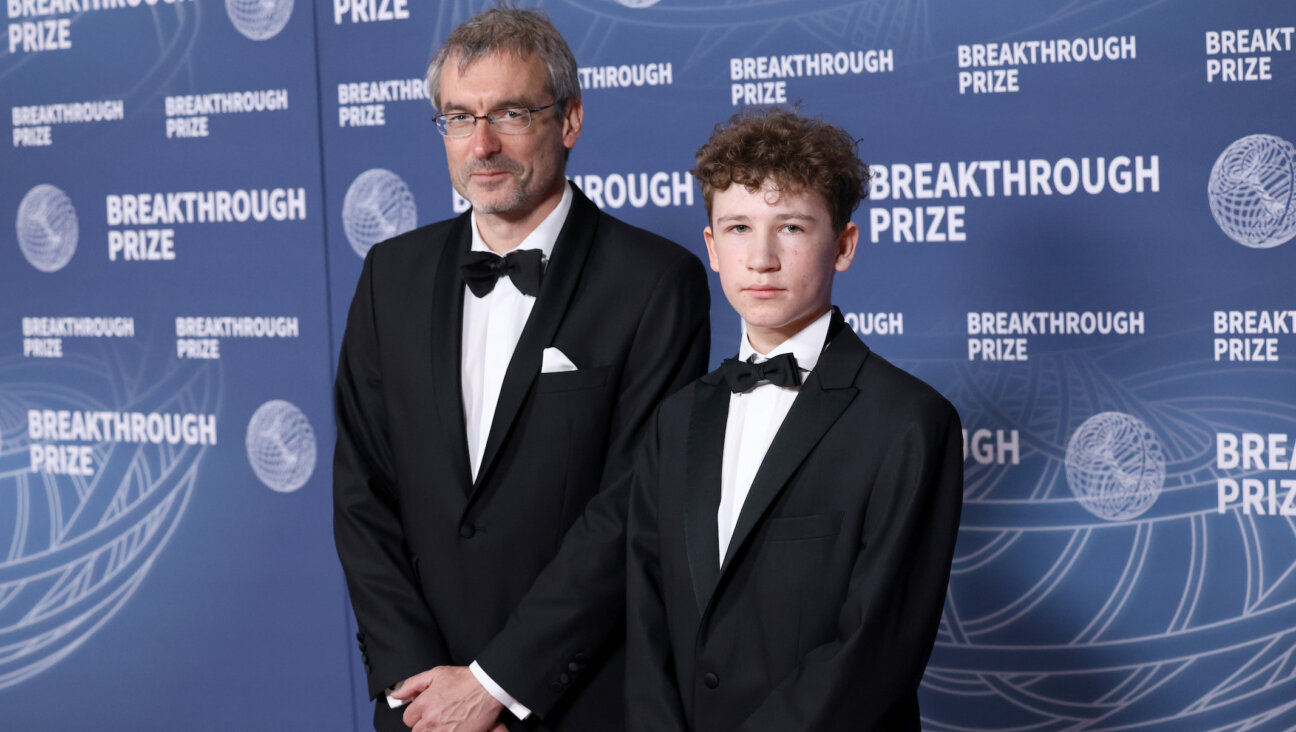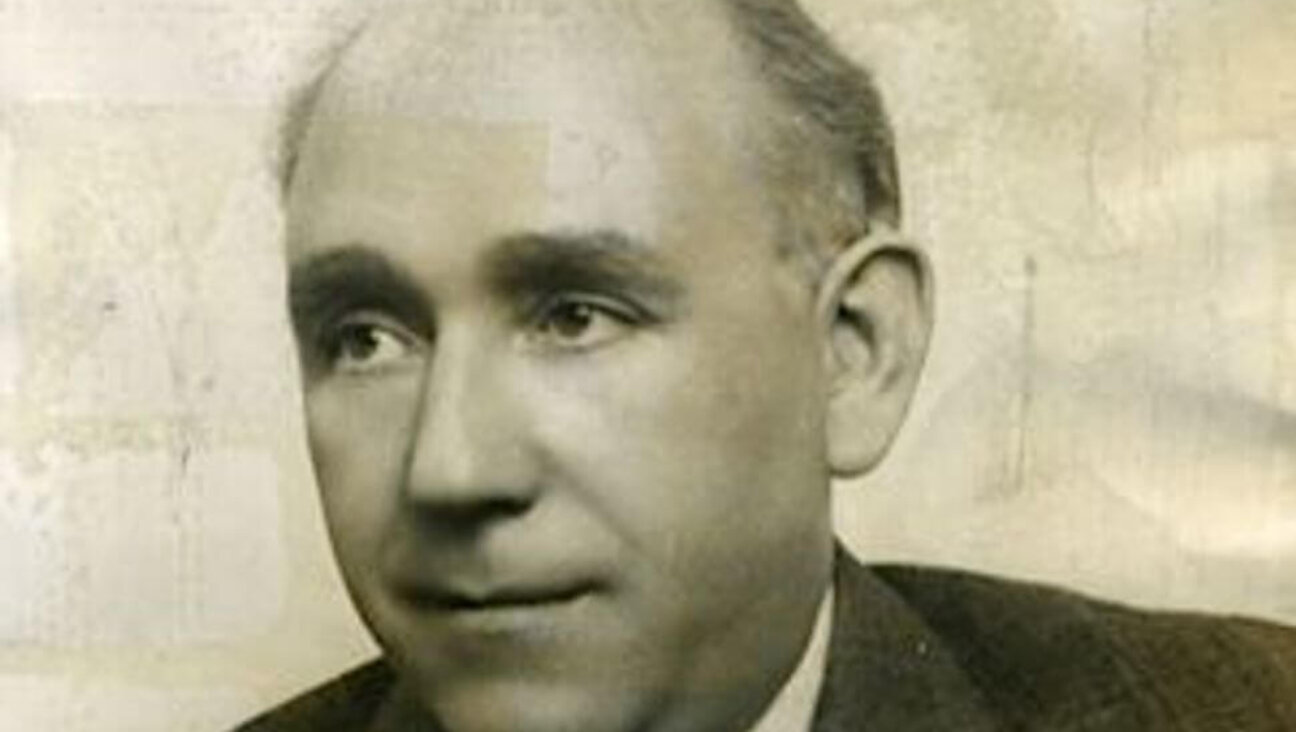An Abstract Haggadah

A NEW LOOK: Archie Granot?s Haggadah is made of paper carved with a surgical scalpel. The project took 10 years to complete.
A decade ago, artist Archie Granot sat down to give new texture to one of the world’s oldest books. This year, his Haggadah is finally complete.

A NEW LOOK: Archie Granot?s Haggadah is made of paper carved with a surgical scalpel. The project took 10 years to complete.
Granot’s Haggadah is different from all other Haggadot in that it is composed entirely of papercuts — sheets of paper carved with a surgical scalpel and intricately layered. Granot has been making papercut art since the 1970s, but in retrospect, he said, “It was a trial run for the Haggadah.”
At the outset of his project, Granot set two rules for himself: Every letter of the text would be cut individually, and the design of every page would be different. He also avoided looking at earlier illustrated Haggadot so as not to be influenced by their designs.
Granot never imagined he would finish his project quickly — he and Max and Sandra Thurm, the New York-based couple who commissioned the piece, expected that it would take four or five years — but he also didn’t plan on the 10-year odyssey that it became.
“In theory, at the beginning it was simple,” Granot, who lives in Jerusalem, told the Forward. “When I got to page 53, making it different from every other page was very difficult. It got harder as I progressed through the work.” Every design that resulted from this process is abstract; there are no cutouts depicting, literally, Moses or the Red Sea. According to Granot, some of the pages are intended to illustrate the story of the Exodus, albeit abstractly, while others reflect a more personal journey.
“There were pages done under periods of extreme stress,” Granot said. “I did one page not long after the bombing at the hotel in Netanya [in 2002], at which both parents of someone with whom I sit in synagogue were killed. You can feel the blood dripping.”
Granot, who was born in London and moved to Israel in 1967, has made papercut ketubot and a version of the Scroll of Esther. But the Haggadah, currently on display in New York at the Yeshiva University Museum, has special significance for him: Not only does it lend itself to visual interpretation, but it also has traditionally been one of the few Jewish books considered acceptable to illustrate.
Asked whether he is relieved to be through with his decade-long project, Granot sounded a little wistful.
“My Haggadah was on my desk the whole time I worked on this,” he said, referring to the copy he used as a source for his papercut text. “Now it’s back on the shelf, and it feels like there’s something missing on my desk.”
Marissa Brostoff is the Forward’s editorial assistant.
The Forward is free to read, but it isn’t free to produce

I hope you appreciated this article. Before you go, I’d like to ask you to please support the Forward.
At a time when other newsrooms are closing or cutting back, the Forward has removed its paywall and invested additional resources to report on the ground from Israel and around the U.S. on the impact of the war, rising antisemitism and polarized discourse.
Readers like you make it all possible. We’ve started our Passover Fundraising Drive, and we need 1,800 readers like you to step up to support the Forward by April 21. Members of the Forward board are even matching the first 1,000 gifts, up to $70,000.
This is a great time to support independent Jewish journalism, because every dollar goes twice as far.
— Rachel Fishman Feddersen, Publisher and CEO
2X match on all Passover gifts!
Most Popular
In Case You Missed It
-

Fast Forward Just 1 Jewish coach still in NCAA title contention as Todd Golden’s Florida faces Houston in men’s basketball final
-

Fast Forward Breakthrough Prize winner Dennis Gaitsgory is planning to attend a protest in Israel
-

Fast Forward Netanyahu in Washington again to meet with Trump to discuss tariffs, Gaza
-

Fast Forward He called a Nazi sympathizer ‘extraordinary.’ Now he’s a nominee for U.S. attorney.
-
Shop the Forward Store
100% of profits support our journalism
Republish This Story
Please read before republishing
We’re happy to make this story available to republish for free, unless it originated with JTA, Haaretz or another publication (as indicated on the article) and as long as you follow our guidelines.
You must comply with the following:
- Credit the Forward
- Retain our pixel
- Preserve our canonical link in Google search
- Add a noindex tag in Google search
See our full guidelines for more information, and this guide for detail about canonical URLs.
To republish, copy the HTML by clicking on the yellow button to the right; it includes our tracking pixel, all paragraph styles and hyperlinks, the author byline and credit to the Forward. It does not include images; to avoid copyright violations, you must add them manually, following our guidelines. Please email us at [email protected], subject line “republish,” with any questions or to let us know what stories you’re picking up.



















